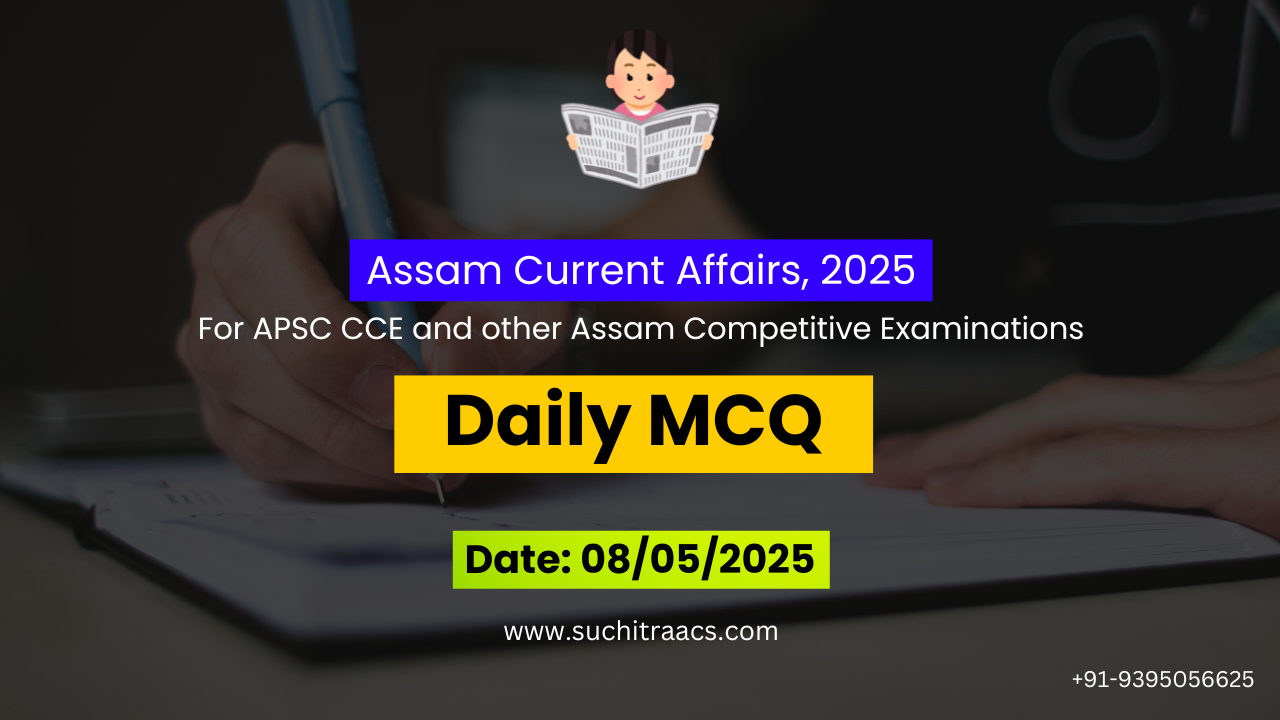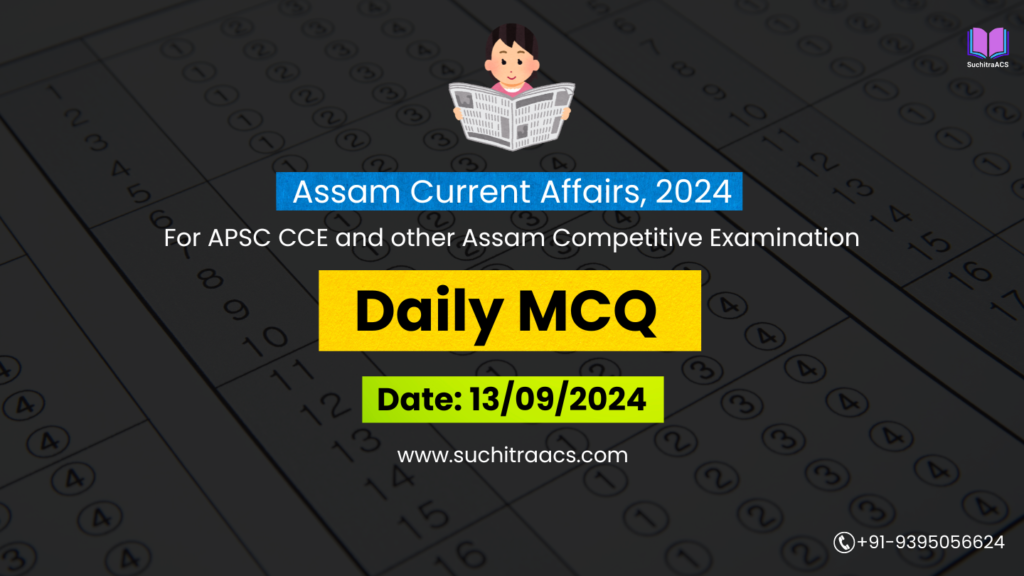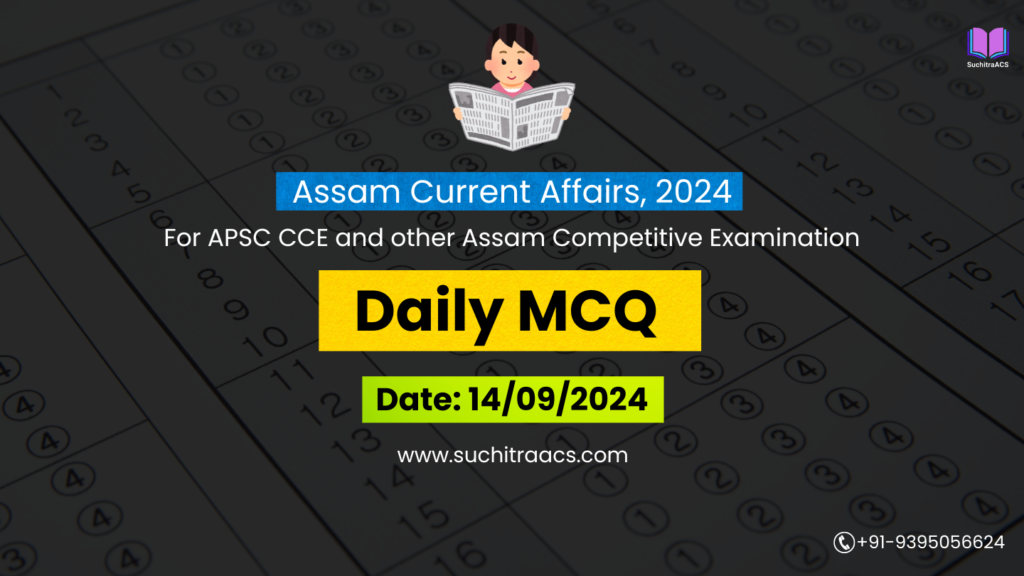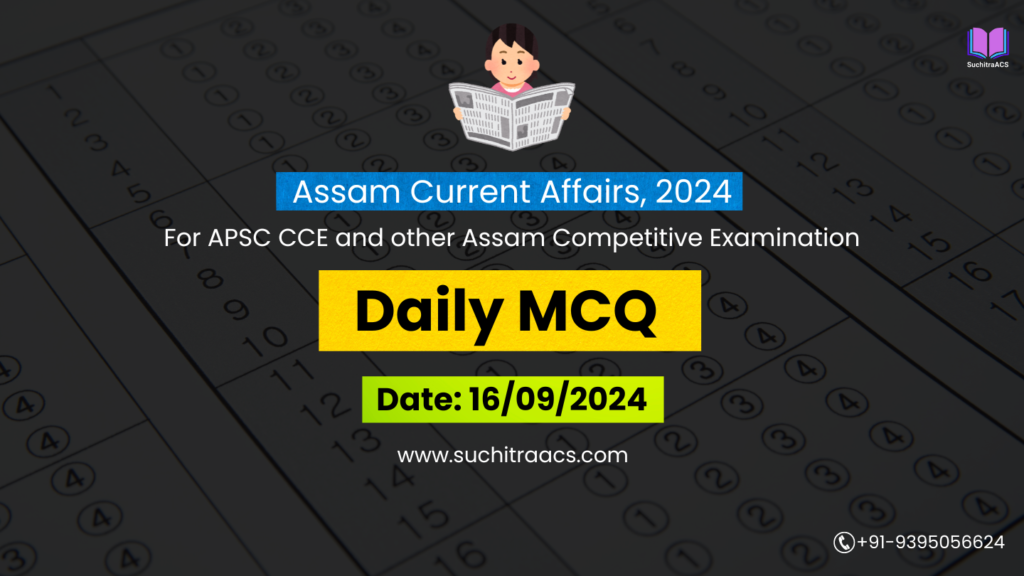APSC MCQs / APSC Prelims Practice Questions based on Assam Tribune (Daily) – 08/05/2025
For APSC CCE and other Assam Competitive examinations aspirants, practicing Daily MCQs is vital. This blog covers most important Prelims questions from the Assam Tribune today (08-05-2025). These issues are key for both APSC Prelims syllabus, offering insights into the important topics of current affairs.
✨ Current Affairs Crash Course for the APSC Prelims 2025

APSC MCQs / APSC Prelims Practice Questions (Date: 08/05/2025)
🛡️ Topic 1: Operation Sindoor – India’s Retaliatory Strike
Q1. Consider the following statements about Operation Sindoor:
- It was India’s first-ever cross-border airstrike post-Uri (2016).
- The operation exclusively targeted Pakistani military installations.
- It was launched as a response to a terror attack in Pahalgam, Jammu & Kashmir.
Which of the above statements is/are correct?
A. 1 and 2 only
B. 3 only
C. 1 and 3 only
D. 1, 2 and 3
✅ Answer: B
🧾 Explanation:
- Statement 1 is incorrect: India had conducted Balakot strikes in 2019 post-Pulwama.
- Statement 2 is incorrect: Targets were terror camps, not Pakistani military sites.
- Statement 3 is correct: The strikes were a response to the April 2025 Pahalgam attack.
Q2. The use of drone and missile-based precision strikes under Operation Sindoor is most relevant to which of the following doctrines?
A. Cold Start Doctrine
B. Strategic Deterrence Doctrine
C. Surgical Strike Doctrine
D. Nuclear Retaliation Doctrine
✅ Answer: C
🧾 Explanation:
- The strikes resemble surgical strike doctrine—measured, targeted, cross-border strikes without full-scale escalation.
🧬 Topic 2: NECTAR’s Bio-Economy Push in Assam
Q3. Which of the following best describes a “Bio-Economy” initiative in the context of NECTAR’s recent programme?
A. A trade mechanism for genetically modified organisms
B. Use of biological resources and biotechnological innovation to generate rural income
C. An agricultural subsidy scheme for organic farmers
D. An environmental tax on chemical-based industries
✅ Answer: B
🧾 Explanation:
- Bio-economy involves using natural resources (like bamboo, mushrooms, manure) for economic activities, as seen in NECTAR’s convergence model.
Q4. Match the following institutions with their roles in the bio-economy convergence programme in Assam:
| Institution | Role |
| A. NECTAR | 1. Field-level training and demonstrations |
| B. APART | 2. Agribusiness and logistical support |
| C. KVKs | 3. Central technology convergence and pilot design |
A. A-3, B-2, C-1
B. A-1, B-3, C-2
C. A-2, B-1, C-3
D. A-3, B-1, C-2
✅ Answer: A
🧾 Explanation:
- NECTAR = Tech design and convergence hub.
- APART = World Bank-linked agri-business support.
- KVKs = Field-level training and demonstration units.
🏥 Topic 3: Urban Primary Health Centres (UPHCs) in Assam
Q5. Which of the following services are typically offered at Urban Primary Health Centres (UPHCs)?
- Maternal and child healthcare
- Emergency surgical services
- Non-communicable disease (NCD) screening
- Immunisation programmes
A. 1, 2 and 3 only
B. 1, 3 and 4 only
C. 1 and 2 only
D. All of the above
✅ Answer: B
🧾 Explanation:
- UPHCs are meant for primary care, not emergency surgeries (that’s for secondary/tertiary care).
- Services include OPD, maternal health, immunisation, NCD clinics.
Q6. The National Urban Health Mission (NUHM) was launched primarily to:
A. Provide mobile health vans in remote villages
B. Offer free dialysis to rural BPL patients
C. Strengthen primary health services in urban poor areas
D. Build medical colleges in tier-2 cities
✅ Answer: C
🧾 Explanation:
- NUHM was launched in 2013 to bridge the urban-rural health access gap, particularly in slums and low-income urban settlements.
🛣️ Topic 4: Revival of North Bank Rail-Cum-Road Bridge Proposal
Q7. Consider the following benefits of a proposed rail-cum-road bridge over the North Bank of Brahmaputra:
- Faster civilian and military movement
- Improved connectivity to eastern Arunachal Pradesh
- Reduced flood vulnerability of road networks
- Enhanced river transport services
Which of the above are valid benefits?
A. 1, 2 and 3 only
B. 1 and 2 only
C. 1, 2, 3 and 4
D. 2 and 4 only
✅ Answer: A
🧾 Explanation:
- River transport enhancement is not a direct outcome of bridge construction.
- Rest are valid: bridge improves road redundancy, troop mobility, and access to flood-prone North Bank areas.
Q8. Which of the following statements best explains the term “rail-cum-road bridge”?
A. A double-decker bridge that allows both trains and cars to operate on the same platform
B. A bridge with integrated lanes for rail and road, usually on separate levels
C. A rural bridge that connects highways to railway stations
D. A bridge connecting rail freight yards to expressways
✅ Answer: B
🧾 Explanation:
Rail-cum-road bridges usually feature road on top, rail below or vice versa, using separate decks.
 APSC Prelims Crash Course, 2025
APSC Prelims Crash Course, 2025
at most affordable rate in Assam!
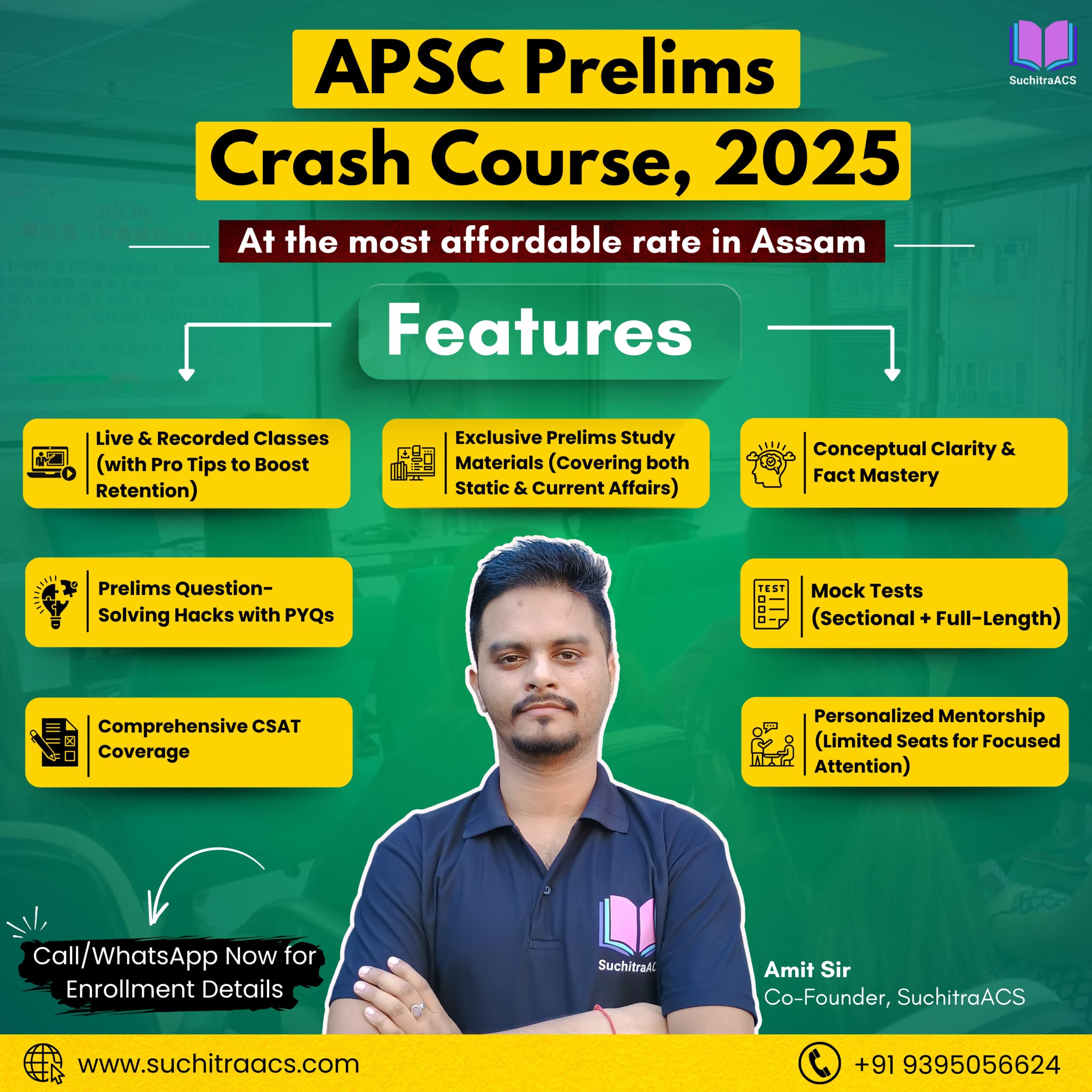
🔔 Join Our WhatsApp Study Group!
For exclusive access to premium quality content, including study materials, current affairs, MCQs, and model answers for APSC CCE and other Assam competitive exams.
Click here to join: SuchitraACS Study WhatsApp Group
📚 Want to know more about SuchitraACS’s most affordable courses?
Click here to know more: SuchitraACS Courses for APSC CCE and Assam Competitive Examinations

